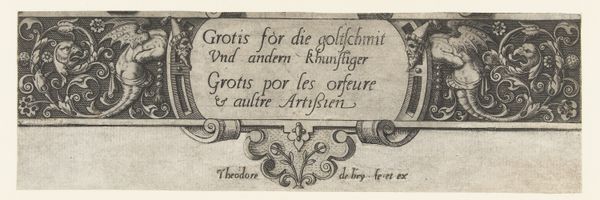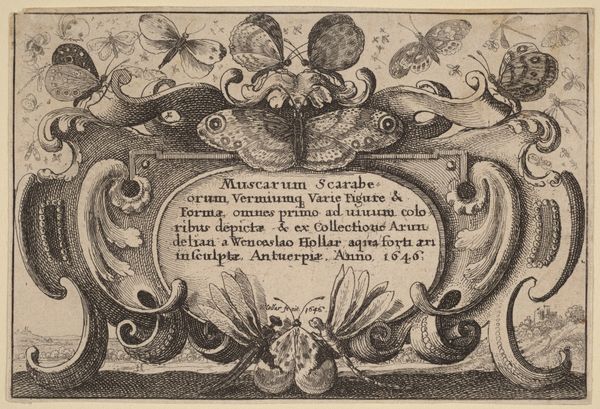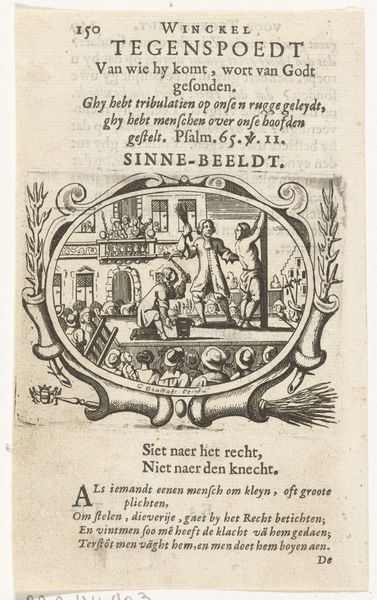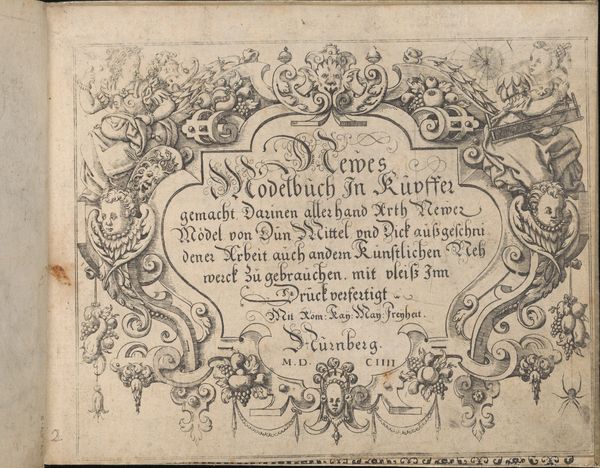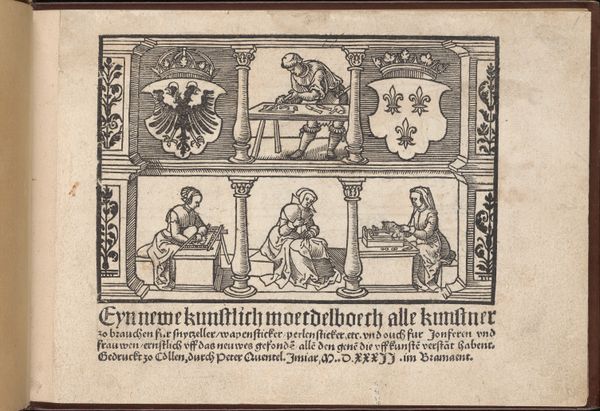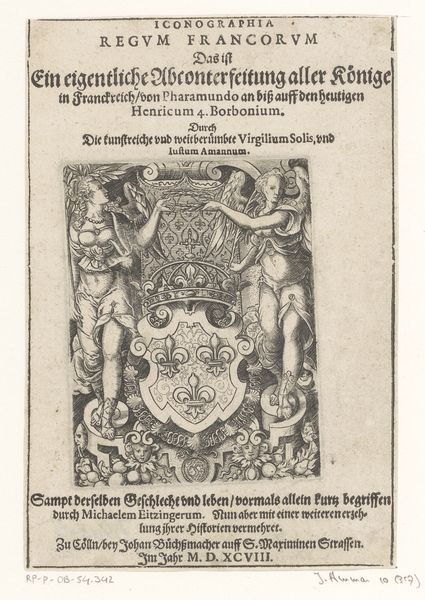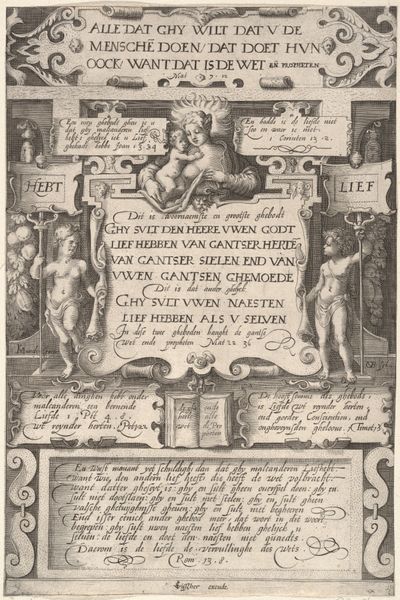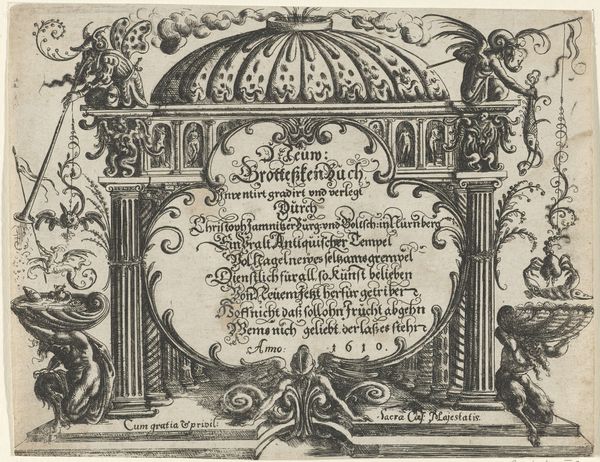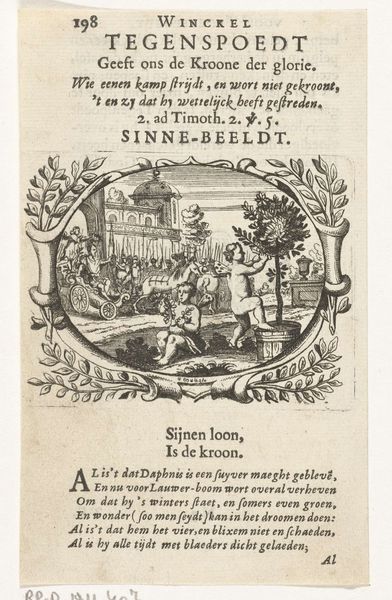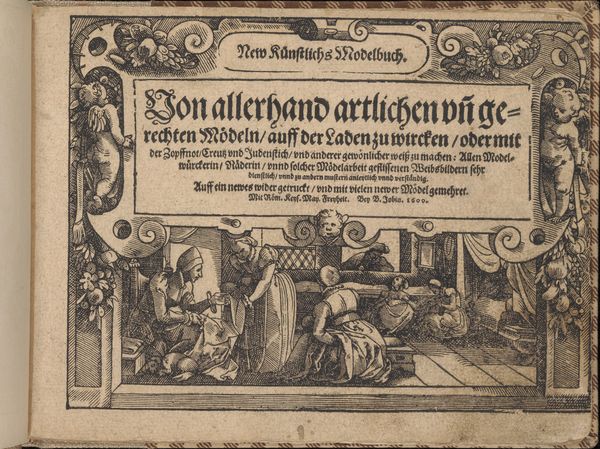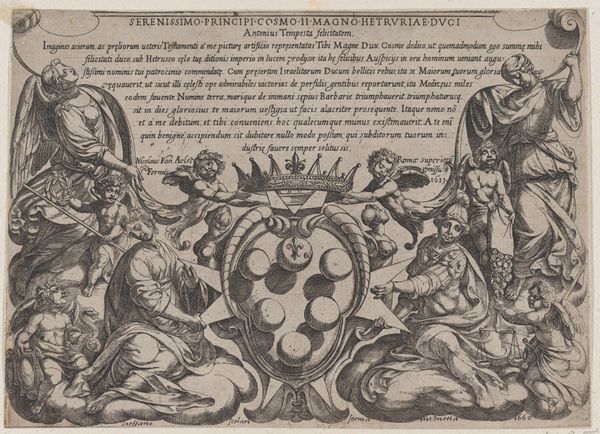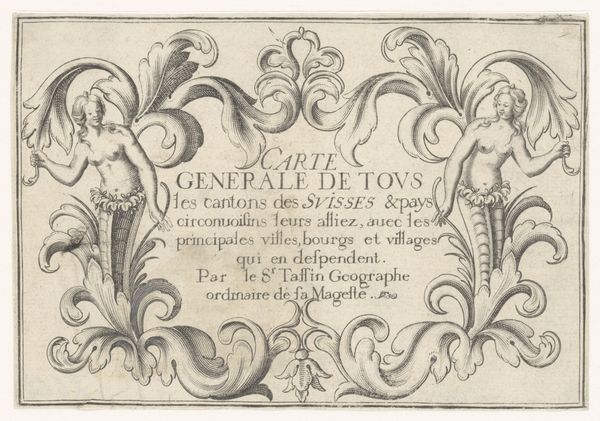
Title Page, from Grotisch fur alle Kunstler 1580 - 1600
0:00
0:00
drawing, graphic-art, print, engraving
#
drawing
#
graphic-art
#
pen drawing
# print
#
pen illustration
#
pen sketch
#
bird
#
child
#
men
#
line
#
northern-renaissance
#
engraving
Dimensions: sheet: 2 5/8 x 5 3/4 in. (6.6 x 14.6 cm)
Copyright: Public Domain
Curator: Theodor de Bry created this elaborate title page sometime between 1580 and 1600. It's currently housed at the Metropolitan Museum of Art. De Bry was a Flemish engraver, known for his detailed depictions, and this work, rendered in pen and engraving, showcases that. Editor: Wow, okay. My first impression? This is straight out of a fever dream from someone obsessed with a Victorian cabinet of curiosities. It feels… densely decorative. So much happening! Eagles, monkeys, little cherubic faces. Curator: It’s definitely a product of its time. We see the influence of the Northern Renaissance aesthetic, with its intricate details and fondness for symbolism. "Grotisch fur alle Kunstler," translates to "Grotesque for all Artists" suggesting its intention as inspiration for other artists, a showcase of decorative motifs. Editor: "Grotesque" makes total sense; there’s this underlying sense of controlled chaos! What's interesting is how it teeters on the edge of being overwhelming but maintains this odd visual harmony. Did people really hang these up as, like, inspirational posters back in the day? Curator: Not quite posters, but these prints, circulated widely, would have served as visual sourcebooks for artisans. They'd adapt and incorporate these motifs into various art forms – from furniture design to jewelry. This title page offers insight into the visual language and the cultural preoccupations of the time. Note the repetition of forms, a visual echo chamber speaking to ideals of beauty, nature, and possibly even trade. Editor: And those slightly menacing eagles perched at the top? It’s like a who’s who of status symbols! It almost feels like it's satirizing the visual excess of the elite. The little mischievous monkeys add a touch of playfulness. It's fascinating how much personality comes through despite the rigid style. Curator: Considering the historical context is vital. De Bry’s work often served not only as aesthetic examples, but also to create narratives and spread particular cultural ideas. As we view this work through a contemporary lens, we may unpack not just its artistic merit, but also the historical ideologies embedded in its ornamental structure. Editor: It definitely makes you think. This seemingly straightforward title page pulls you in. It's amazing how art from so long ago can still ignite such a layered conversation about art, culture, and just what humans find beautiful, or at least, interesting.
Comments
No comments
Be the first to comment and join the conversation on the ultimate creative platform.
